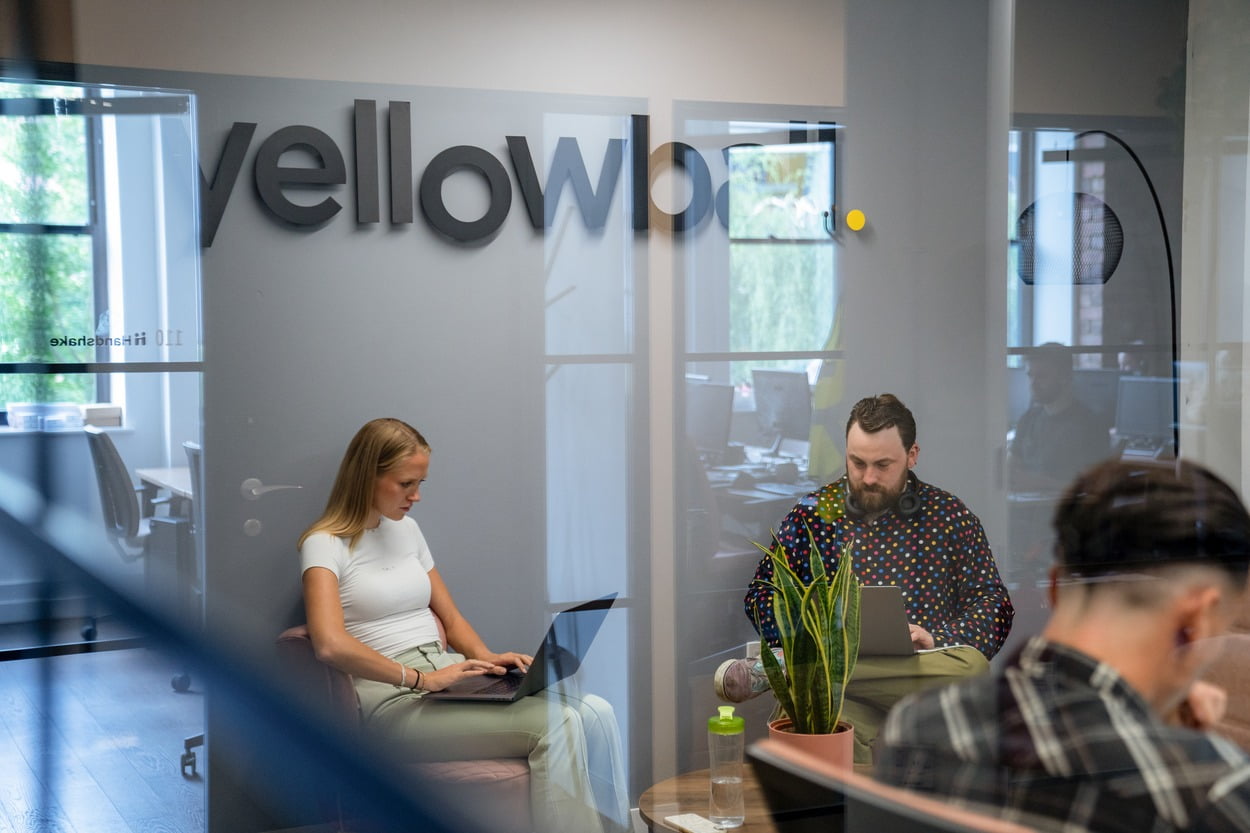Once a business website is live and running it needs to be actively managed and maintained to keep it operating effectively. Leaving a site up with no management plan is a bit like running a new car without any maintenance – things are likely to go wrong down the line.
You’ve invested a lot to get the website your business deserves, and regular website management including design edits, server management, performance improvements, analytics and security updates are critical both for your cybersecurity and online customer service. Here are some website management steps to help explain what needs to be done, when it should be done, and how to do it.
Step 1 – Choose a Good Content Management System (CMS)
A CMS is the easiest and simplest way to manage the basic functions of your website, and the team who designs your site will usually recommend one. Using a CMS, you can create and implement a content plan as part of your marketing strategy, sending out blogs and articles to keep your website fresh and your visitors clicking in. It’s also a good way for simplifying many basic website management tasks, which can get quite technical if IT is not your speciality.
Our website design team recommends WordPress because it can run simple as well as complex websites, is user-friendly and intuitive even if you don’t have a web design background, offers plenty of plugins to add functionality to the site, has some great keyword tools, and good customer support. Oh, and it’s completely free.
Step 2 – Daily Backups
If your website is affected by a cybersecurity issue, natural disaster, or manmade event, you need to be able to restore it as quickly as possible. This means having an up-to-date version of your website that you can quickly roll back to. The more current your backup is, the less data you’ll lose, and the less downtime and consumer confusion you’ll have to deal with. Because it is so important, this should be one of the daily tasks your website management team performs.
It’s easy to think that no one is going to attack a small and medium-sized business, but the reality is that cybercriminals are increasingly targeting these businesses, with 4,500 successful attacks per day in the UK alone, precisely because their defences are often so low. In fact, the biggest cyberattack of 2021 (perpetuated by REvil in July) affected up to 1,500 smaller businesses around the world, including grocery stores and schools. Those victims with current backups of their systems refused to pay the ransom and managed to restore their business.
Step 3 – Monitor Your Websites Uptime
To bring home the bacon, your website needs to be up and running 24 hours a day, 7 days a week, through the holidays. But how do you know when it’s gone down? Rather than waiting for an irate or frustrated customer to call to complain, your website management process should include an uptime monitoring tool like UptimeRobot, Updown, StatusCake, or Monitis. This will report stats on your website’s uptime as well as alert you when and if it goes down, and should be one of your team’s daily tasks.
Downtime is a serious issue in today’s digital age, and not just because it frustrates clients and customers – it affects your reputation and bottom line too. A study by Smallbiztrends showed that, on average, websites went down for 3 hours a month. While no two businesses are the same, it makes sense that when your website isn’t working, your online customers aren’t buying during that time and they’re going straight to your competitor instead. Just to give you an interesting statistic, website downtime in 2016 cost Amazon US$3.75 billion in just 20 minutes!
Step 4 – Daily Security Reporting and Encryption
Even if you have a good backup system in place, you need to monitor all aspects of your website’s security daily to lower your risk of attack as well as encrypting all information that flows through the site and limiting the damage an attack can accomplish. Partnering with a good hosting service should help you secure your website properly, but there are additional tools you can use to increase security. This is a good idea if your website has e-commerce functionality, if you are storing any client data, or operate in a more sensitive industry with high-value information.
Services like Let’s Encrypt deliver that all-important SSL (Secure Sockets Layer) certification for your website (browsers and search algorithms also give preference to these sites in search results), Cloudflare creates a web application firewall (WAF) to analyse incoming traffic on your website for attacks and blocks suspicious activity, and Duo Security implements two-factor authentication for site access, stopping brute-force attacks in their tracks. Most systems offer some level of automation where, once they are set up, they will automatically alert you if any suspicious activity occurs.
Step 5 – Check for and Install Updates and Patches
Constant software updates are an unfortunate and slightly annoying reality in the IT world, but they‘re there for good reason. While they may add some useful functionality on some occasions, the main reason for the updates is security. As fast as hackers try to find vulnerabilities in software and systems, software developers have to work faster to block them out. Remember the massive WannaCry attack in May 2017 that took out 200,000 computers around the world, including hitting the NHS and costing the UK £92 million? That was due to a vulnerability on outdated Windows systems that hadn’t been updated with the latest security patches.
Updating your content management system is just as critical as updating your computer and network software, so we recommend checking in for WordPress, Theme and Plugin updates once per week as part of your maintenance schedule.
Step 6 – Add Fresh Weekly Content: Website Content Management
Websites that have regular content updates rank better than those that don’t, as it’s a significant signal to search engines and helps draw in new visitors. The easiest way to do that is to use your CMS to add a blog to your website (WordPress offers this automatically) and to start publishing articles to your website. However, it’s not quite as simple as it sounds, as the content needs to be:
- High-quality – Well-written, with good grammar and spelling. Keep it human as well as in line with your brand personality and consumer expectations.
- Informative – The content needs to be relevant and engaging to your audience, and not repetitive or plagiarised from other online content.
- Regular – The best impacts seen on SEO come from articles published once a week or slightly more often.
In addition to blog content, you can upload videos, podcasts, whitepapers, and product announcements. You can also link this content on your social media accounts, which should be embedded into your website.
Step 7 – Keep on Testing
The most important website testing occurs before your site goes live, but it’s important to remember that the browsers and devices that are accessing the site are also constantly being changed and upgraded. This can affect how your website looks or functions, so it’s important to keep up with regular monthly testing to check for issues with layout and functionality to keep the customer experience where it should be. Again, this should occur once a week or when large updates are expected in the form of major browser upgrades or new device launches.
Step 8 – Monthly Performance Testing
We’ve mentioned before that fast load times are very important to user experience as well as SEO. According to Google, 2 seconds is the upper limit for e-commerce websites, and they’ve made it clear that fast load times are a factor in improving your position in search results because of the impact on user experience.
This is because just a one-second delay will cause a 4.9% drop in traffic, a three-second delay a 7.9% drop in traffic, and that decreasing mobile load time alone by just one-tenth of a second causes an 8.4-10.1% increase in conversions.
To test the load speed of your website, we recommend using Google’s PageSpeedInsights and measuring your site’s performance against established load speed benchmarks. This should be done monthly or quarterly, with more frequent testing for e-commerce and higher-volume platforms.
Step 9 – Monthly Form Testing
Even the most basic business websites contain forms, whether they are for signing up an account, sending in an enquiry, or filling in an order or delivery information. Each month, we recommend that you fill in and test all forms on your website to make sure that browser and software updates or website edits haven’t affected their functionality. When forms aren’t working well, customer service and sales suffer.
Step 10 – Declutter Your Database
If you are using a CMS like WordPress, it can quickly get cluttered with unnecessary content like blog drafts, revisions, and spam comments. Every few months, we recommend that you spring clean your database to remove this clutter. This will help make website management a bit easier and it can help improve website performance by streamlining the website, improving load speeds.
Step 11 – Regulatory Compliance
Every year, we see more regulations applying to the online space, from copyright information and terms of use to data privacy policies, terms of sale, and more. It’s essential that your website is updated as soon as possible after new regulations are implemented to stay compliant and covered regarding issues of content control, law, jurisdiction, IP, and liability.
One thing that many businesses forget is to make their website compliant with the Equality Act of 2010. It’s not only important from a regulatory perspective but a customer-facing one too, as it makes your website more accessible to all and shows that you are serious about including everyone in your business. You can analyse how accessible your website is using Google Chrome’s WAVE tool, as well as implementing descriptive alt tags for images, making the text accessible for text-to-speech recognition software, offering text transcripts for video and audio content, and more.
Step 12 – Track Performance Through Analytics
Although you are monitoring security and uptime, you still need to know how your website is performing as a marketing product. This means monitoring how your visitors, customers and clients are interacting with your website pages – how long they are spending on your website, which pages are the most or least popular, what pages have high bounce rates, and so on.
Our website management team recommends that you use Google Analytics to track and evaluate site performance – and not just because it’s free! It automatically collects data for you and generates reports instantly, whenever you need them. It integrates well with other tools and platforms, including other Google platforms like AdWords, and it allows you to get a lot of data on your visitors, from their geographic location and age to their interests, the device they’re using, and much more.
Google Analytics is invaluable for seeing if your website is generating the value you want to see. When you have goals set for your website, you can track the delivery on things like sales, signups, downloads and much more. It will show you what content visitors are enjoying the most so you can generate more, and it supplies heat maps that show you where everyone is spending the most of their time on your website.
DIY or Professional Website Management Services?
As you can see, website management is active, complex, and constant. So, should you outsource this to a specialist team? Well, we say that if you have the web management know-how, the time, and a relatively small and simple website, then DIY may be a suitable option. But if you are running a busy business where skills and resources can be put to better use elsewhere, then it’s worthwhile getting an external web management team involved.
At Yellowball, a multi-award-winning web marketing agency, we offer our client’s end-to-end digital service, from website design to website management, content development, SEO, and much more. If you’d like to chat, contact us today and see how we’ll run your website, transforming it into a powerful digital brand awareness and sales engine.
















